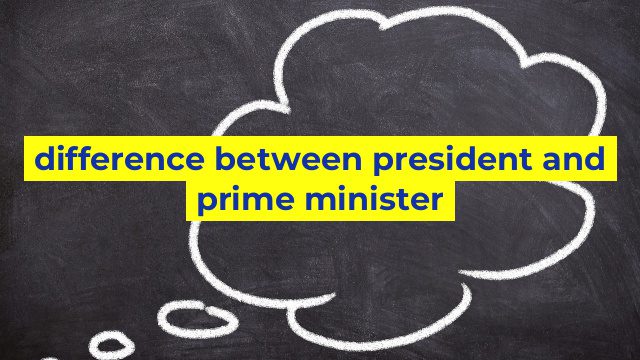The Difference between President and Prime Minister: Understanding the Key Roles
When it comes to government systems, there are various forms of leadership, including presidencies and prime ministerships. The primary difference between a president and a prime minister lies in the way they come to power, their scope of authority, and their responsibilities. Understanding these differences is crucial for anyone looking to compare and contrast the two forms of governance.
How Are Presidents and Prime Ministers Elected?
A president is elected directly by voters through the electoral process. In countries such as the United States, the president is elected by a nationwide popular vote, while in other countries, it can be done through an electoral college. In contrast, prime ministers are elected in a parliamentary system, where the leader of the party that has the most seats in the legislature typically becomes prime minister.
What Are the Roles and Responsibilities of a President?
Presidents are often seen as the head of state, with ceremonial and symbolic duties to perform. They lead the executive branch of government, and they have the power to veto or pass legislation that is proposed by the legislative branch. Presidents also represent the country on a national and international level, making treaties, giving speeches, and engaging in diplomacy with other world leaders.
What are the Roles and Responsibilities of a Prime Minister?
Prime ministers, on the other hand, are considered head of government, and they hold most of the executive powers. Their job is to lead the government, manage the day-to-day running of the country, and propose and implement policies that will benefit the country. They work closely with their cabinet, which is composed of ministers who are each responsible for a different department, such as finance or health.
Conclusion
In summary, presidents and prime ministers are two different types of leaders with distinct roles and responsibilities. Understanding these differences is key to appreciating how different countries’ political systems work. While both types of leaders work towards the betterment of their country, their processes, and methods of achieving this goal differ significantly – from how they get elected to their scope of authority and the powers they wield.
Table difference between president and prime minister
| President | Prime Minister |
|---|---|
| The head of the state in a presidential democracy. | The head of the government in a parliamentary democracy. |
| Elected directly by the people. | Appointed by the head of the state or the majority party in the parliament. |
| Generally has more ceremonial powers. | Generally has more executive powers. |
| The president’s approval is required to pass laws. | The prime minister’s approval is required to propose laws. |
| Can serve for a specific term or until removed from office. | Serves until they lose the support of the parliament. |
Note: This table is intended for educational purposes only and is not representative of all countries’ political systems. The information presented may differ based on the specific country or government being discussed.

